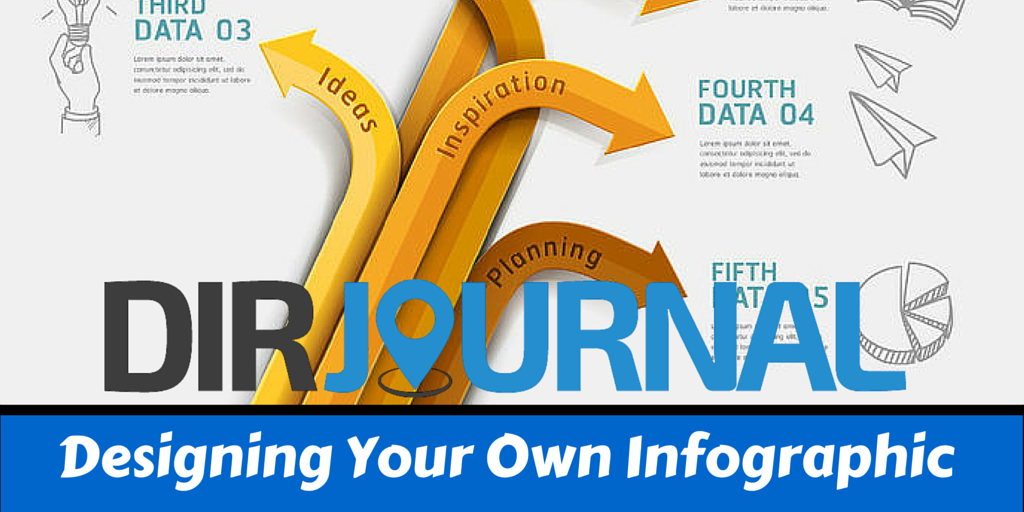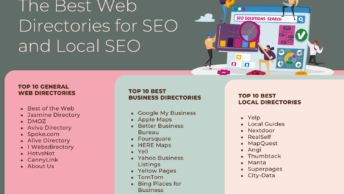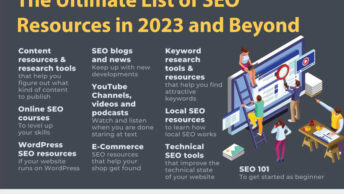Offering infographics can be a key success factor in your overall digital content marketing strategy. Infographics help share large sets of information in a format that is easy for people to read and understand. Infographics take out all the prose that is required to share these facts and figures. They are also more interesting to look at than reading a long article full of details.
You can hire a graphic designer to do the work for you. You can also use a crowd-sourced design site like DesignHill. Or, you can grab some free infographics, as listed in this Infographics: Does Your Business Need (or Want) Them?.
It can be a rewarding experience when you create the infographic yourself. The following are some suggestions on what to consider for each step that you take in creating your own infographic. (Don’t forget to refer to the article, above, for additional resources.)
#1: You Need A Color Scheme
You cannot use every color in the rainbow when you create an infographic, so you should choose a color scheme that matches your branding and site theme. Companies that present infographics on their own businesses will use the colors of their logo, but someone creating an infographic for a random set of information should choose a bold color scheme that is not too hard on the eyes. Soft colors are easier to read, and a combination of a few basic colors makes the infographic easier to read overall.
#2: You Need to Use Numbers That Make Sense (Accurate Information)
The numbers included in an infographic will convey your point quite well, but you must use numbers that people will understand. Numbers with uncommon units of measure will not convey the message as easily. Also, numbers that fill up a whole panel of the infographic may be too hard to read. Share the facts that are most relevant and have the most impact. Leave out the numbers that clog up the design.
#3: Infographics Should Have a Logical Flow
Infographics should progress from one panel to another. The panels will start with the basics that need to be covered and set the foundation. Then, the infographic moves from one part of the issue to another, slowly. The numbers at the bottom of the infographic must be astounding enough to reveal the true nature of your story. The numbers at the top of the infographic will simply get people interested in reading more and taking in what is being shared by the infographic.
#4: Your Infographic Should Not Be Too Long
Infographics can share a lot of information in a small space, but your infographic should not be so large that it cannot be read easily. Viewers will grow tired of scrolling. They are likely to believe that the infographic will never end. Think of the infographic as a poster that you would hang on the wall. The poster should not reach from the floor to the ceiling, and the same is true with the infographic that you are creating.
#5: Maintain One Style
The infographic should maintain the same style from the beginning to the end of the document. Creators who use multiple styles, pictures, and colors in a single infographic muddy the waters by creating something that is too difficult to follow. The tools used to create effective infographics help people create documents that appear to be cohesive to the average reader. Most people will only read the infographic once, and the infographic needs to convey its message properly, without boring the reader.
#6: Who Needs Infographics?
Infographics are an essential part in providing quick bits of information to readers. Readers who see infographics for the first time must be compelled to print a copy. It doesn’t mean that they will, but they should be drawn to the infographic in a way that encourages them to feel that way.
People who do not print a copy must be able to remember the general idea of the infographic without additional help (keeping it simple). Every organization that is committed to improving the world, or its own market share, should consider creating infographics… and, creating those that are easy to read and retain.
In Conclusion…
The infographic culture we live in today helps people get the maximum amount of information in the smallest amount of space. These posters can be published online, printed to hang on a wall, or folded to be included in a mailing. Each infographic is an opportunity to change (or challenge) the mind of the reader with startling facts and figures.
Now it is your turn. Are you ready to start creating?







